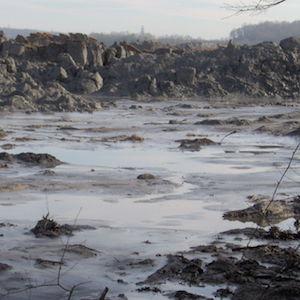Environmental contamination with heavy metals is often the result of various types of industrial processes. Because heavy metals can be dangerous to humans and other wildlife, contaminated sites need to be cleaned up. This isn't easy. Chemical extraction methods can introduce different types of pollutants into the environment.
Bioremediation -- using biological organisms to clean polluted areas -- is a hot area of research. Some plants can naturally sop up heavy metals without any ill effects, but plants don't always grow large enough to soak up all the pollution. Besides, plants can't be used to clean up contaminated water.
So, scientists have increasingly chosen to use the techniques of biotechnology to create genetically engineered microbes capable of gobbling up pollution. The latest example of this was described by a team of Romanian and Norwegian researchers in the journal Applied Microbiology and Biotechnology.
 The researchers created new protein-encoding genes that consisted of three parts: (1) A cell membrane anchor; (2) green fluorescent protein; and (3) one of three kinds of metal-binding peptides. When these new genes were expressed in Saccharomyces cerevisiae (the common baker's yeast), the new proteins attached to the inner side of the cell membrane and glowed green. (See modified figure. The green glow was necessary for the researchers to verify the location of the proteins in the cell.)
The researchers created new protein-encoding genes that consisted of three parts: (1) A cell membrane anchor; (2) green fluorescent protein; and (3) one of three kinds of metal-binding peptides. When these new genes were expressed in Saccharomyces cerevisiae (the common baker's yeast), the new proteins attached to the inner side of the cell membrane and glowed green. (See modified figure. The green glow was necessary for the researchers to verify the location of the proteins in the cell.)
Then, the engineered yeast were tested for their ability to soak up various types of metals. Yeast engineered with a metal-binding peptide made up of aspartate and glutamate were the best at adsorbing copper and manganese ions; cysteine peptides were best at adsorbing cadmium and silver ions; and histidine peptides were most adept at adsorbing cobalt and nickel ions. The best performing strains were able to remove about 80% of their respective metal ions.
The next step, should the authors choose to pursue it, would be to test the engineered yeasts' ability to function in a more useful setting, such as a water treatment plant or an actual contamination site. Also, they will need to determine the best way to harvest (and dispose of) the yeast cells after they have accumulated the toxic metals.
Source: Lavinia Liliana Ruta, et al. "Heavy metal accumulation by Saccharomyces cerevisiae cells armed with metal binding hexapeptides targeted to the inner face of the plasma membrane." Applied Microbiology and Biotechnology 101 (14): 5749–5763. Published: 3-Jun-2017. doi: 10.1007/s00253-017-8335-0




